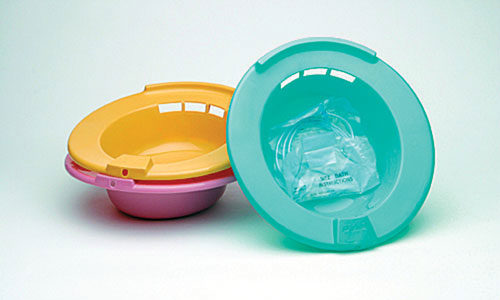The conventional presentation of a person with hemorrhoid is bleeding, usually during bowel movement. The bleeding connected with hemorrhoid smears the stool or the tissue paper, while the feces are negative for blood smudges. Many cases of hemorrhoids are painless, unless there is consequent thrombosis. Moreover, even though patients may complain of blistering or prickling, the reality is that hemorrhoids do not prickle or blister. It is the anal lining which is the spot of pruritis, and is commonly the cause of bad hygiene in the region.
Clinical treatment for hemorrhoids is generally based on the gravity of symptoms and level of the condition. In asymptomatic hemorrhoids, traditional treatments are commonly carried out. Bulge-forming causes, the prevention of constipation, or a traditional Sitz bath can usually eliminate the problem, or decrease the symptoms. Thus, minor degree, as asymptomatic hemorrhoids are cured in these methods. In symptomatic hemorrhoids, most doctors use infra red coalescence, or a rubber band ligation is performed. A more conventional surgical therapy, called sclerotheraphy, is not performed today.
During a rubber-band ligation, a small elastic rubber band is situated around the region of the hemorrhoids, leading the tissue to wilt and fall off as a result of the blockage of blood supply. Similarly, this banding therapy is beneficial for medium to high degree hemorrhoid.
Surgical operations, commonly in the form of hemorrhoidectomy, are commonly performed for very high degree of hemorrhoids, or in some cases in high degree hemorrhoid with a large outer part. In these situations, the large blood vein is discarded and gauze stuff is added inside to regulate bleeding. The result after the surgery is very satisfactory in most cases, and the patient should be motivated to increase fiber in the food diet and prevent constipation to avoid recurrence of the hemorrhoid. During recuperation, patients may go through pain after the surgical treatment as the anal lining contracts and relaxes, however, total revitalization is commonly observed within one to two weeks.
External hemorrhoids are less painful and less troublesome than internal hemorrhoids. Oftentimes, they do not cause many health problems. Elimination is usually performed for very large bulging hemorrhoids that blocks with the bowel movement. Most of the time, patients may present with extreme perianal sting and a bulge near the anal area following extreme constipation or prolonged standing or sitting.
Physical exam of the rectal region may disclose a thrombosed external hemorrhoid. This type of hemorrhoid is one, which blood has collected and formed a clot. Commonly, it forms outside the rectal area, around the anal region. It typically appears as a lump, plum or blue skin-covered blood veins, or can be scarlet when swollen. When you touch it, it feels as a rigid bulge, about a size of chickpeas. With this kind of hemorrhoid, most patients go through severe strain.
A thromboses outer hemorrhoid can lead to inflammation, prickling and pain, yet it will completely never bleed. The common treatment is sapping or elimination of the coagulation or the whole hemorrhoid, but only if the condition is very serious. If not, eager supervision and a considerable high fiber in the daily diet is usually all that is required, as the condition is commonly self-limited over a period of two to three weeks.


